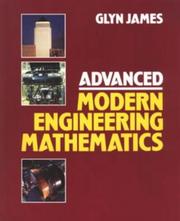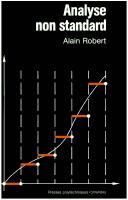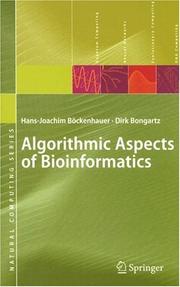| Listing 1 - 10 of 17 | << page >> |
Sort by
|
Book
ISSN: 03650936 ISBN: 2803101440 9782803101443 Year: 1997 Volume: 3e sér., t. 12 Publisher: Bruxelles Académie royale de Belgique
Abstract | Keywords | Export | Availability | Bookmark
 Loading...
Loading...Choose an application
- Reference Manager
- EndNote
- RefWorks (Direct export to RefWorks)
Mémoires de 1980 à 2008 sont consultables gratuitement sur le site de l'ARB
Analytic functions. --- Fonctions analytiques. --- Fonctions d'une variable complexe --- Complex analysis --- Analytical functions --- Analyse (wiskunde)
Book
ISBN: 9781441912961 9781441913111 9781441912954 9781493951093 Year: 2010 Publisher: New York NY Springer New York
Abstract | Keywords | Export | Availability | Bookmark
 Loading...
Loading...Choose an application
- Reference Manager
- EndNote
- RefWorks (Direct export to RefWorks)
Today, nearly every undergraduate mathematics program requires at least one semester of real analysis. Often, students consider this course to be the most challenging or even intimidating of all their mathematics major requirements. The primary goal of A Problem Book in Real Analysis is to alleviate those concerns by systematically solving the problems related to the core concepts of most analysis courses. In doing so, the authors hope that learning analysis becomes less taxing and more satisfying. The wide variety of exercises presented in this book range from the computational to the more conceptual and varies in difficulty. They cover the following subjects: set theory; real numbers; sequences; limits of the functions; continuity; differentiability; integration; series; metric spaces; sequences; and series of functions and fundamentals of topology. Furthermore, the authors define the concepts and cite the theorems used at the beginning of each chapter. A Problem Book in Real Analysis is not simply a collection of problems; it will stimulate its readers to independent thinking in discovering analysis. Prerequisites for the reader are a robust understanding of calculus and linear algebra.
Functional analysis --- Differential equations --- Mathematical analysis --- Mathematics --- analyse (wiskunde) --- mathematische modellen --- wiskunde
Multi
ISBN: 9783642008566 9783642010378 9783642008559 Year: 2010 Publisher: Berlin, Heidelberg Springer
Abstract | Keywords | Export | Availability | Bookmark
 Loading...
Loading...Choose an application
- Reference Manager
- EndNote
- RefWorks (Direct export to RefWorks)
This revised and enlarged fourth edition of "Proofs from THE BOOK" features five new chapters, which treat classical results such as the "Fundamental Theorem of Algebra", problems about tilings, but also quite recent proofs, for example of the Kneser conjecture in graph theory. The new edition also presents further improvements and surprises, among them a new proof for "Hilbert's Third Problem". From the Reviews "... Inside PFTB (Proofs from The Book) is indeed a glimpse of mathematical heaven, where clever insights and beautiful ideas combine in astonishing and glorious ways. There is vast wealth within its pages, one gem after another. Some of the proofs are classics, but many are new and brilliant proofs of classical results. ...Aigner and Ziegler... write: "... all we offer is the examples that we have selected, hoping that our readers will share our enthusiasm about brilliant ideas, clever insights and wonderful observations." I do. ... " Notices of the AMS, August 1999 "... This book is a pleasure to hold and to look at: ample margins, nice photos, instructive pictures, and beautiful drawings ... It is a pleasure to read as well: the style is clear and entertaining, the level is close to elementary, the necessary background is given separately, and the proofs are brilliant. Moreover, the exposition makes them transparent. ..." LMS Newsletter, January 1999
Mathematical logic --- Number theory --- Geometry --- Mathematical analysis --- Discrete mathematics --- Mathematics --- analyse (wiskunde) --- discrete wiskunde --- wiskunde --- logica --- getallenleer --- geometrie
Book
ISBN: 2744501182 2744501190 9782744501180 9782744501197 Year: 2001 Publisher: Paris: De Boeck,
Abstract | Keywords | Export | Availability | Bookmark
 Loading...
Loading...Choose an application
- Reference Manager
- EndNote
- RefWorks (Direct export to RefWorks)
Analyse (mathématiques) --- Fonctions d'une variable réelle --- Calcul differentiel. --- Calcul intégral --- Fonctions d'une variable réelle --- Calcul infinitésimal --- Calcul différentiel --- Mathématiques --- Mathematics --- Mathématiques --- Analyse (wiskunde)

ISBN: 0201565196 Year: 1993 Publisher: Wokingham : Addison-Wesley,
Abstract | Keywords | Export | Availability | Bookmark
 Loading...
Loading...Choose an application
- Reference Manager
- EndNote
- RefWorks (Direct export to RefWorks)

ISBN: 288074072X 9782880740726 Year: 1985 Publisher: Lausanne: Presses polytechniques romandes,
Abstract | Keywords | Export | Availability | Bookmark
 Loading...
Loading...Choose an application
- Reference Manager
- EndNote
- RefWorks (Direct export to RefWorks)
Analyse (Mathématique) --- Analyse (Wiskunde) --- Analyse mathématique --- Analysis (Mathematics) --- Mathematical analysis --- Wiskundige analyse --- Nonstandard mathematical analysis --- Analyse mathématique non standard --- 517.1 --- #KVIV --- Introduction to analysis --- 517.1 Introduction to analysis --- Analyse mathématique non standard --- Analyse mathématique

ISBN: 9783540719137 9783540719120 Year: 2007 Publisher: Berlin : Springer,
Abstract | Keywords | Export | Availability | Bookmark
 Loading...
Loading...Choose an application
- Reference Manager
- EndNote
- RefWorks (Direct export to RefWorks)
Advances in bioinformatics and systems biology require improved computational methods for analyzing data, while progress in molecular biology is in turn influencing the development of computer science methods. This book introduces some key problems in bioinformatics, discusses the models used to formally describe these problems, and analyzes the algorithmic approaches used to solve them. After introducing the basics of molecular biology and algorithmics, Part I explains string algorithms and alignments; Part II details the field of physical mapping and DNA sequencing; and Part III examines the application of algorithmics to the analysis of biological data. Exciting application examples include predicting the spatial structure of proteins, and computing haplotypes from genotype data. This book describes topics in detail and presents formal models in a mathematically precise, yet intuitive manner, with many figures and chapter summaries, detailed derivations, and examples. It is well suited as an introduction into the field of bioinformatics, and will benefit students and lecturers in bioinformatics and algorithmics, while also offering practitioners an update on current research topics.
Biomathematics. Biometry. Biostatistics --- moleculaire biologie --- complexe analyse (wiskunde) --- Programming --- Molecular biology --- Complex analysis --- bio-informatica --- Algorithms. --- Bioinformatics --- Mathematics. --- Informatiques -- bioinformatique = informatics -- biological informatics --- Informatiques -- programmation algorithmique = informatics -- algorithmic programming
Book
ISBN: 0387903135 3540903135 1475755120 9780387903132 Year: 1978 Volume: 25 Publisher: New York (N.Y.) : Springer,
Abstract | Keywords | Export | Availability | Bookmark
 Loading...
Loading...Choose an application
- Reference Manager
- EndNote
- RefWorks (Direct export to RefWorks)
toegepaste wiskunde --- Mathematical analysis --- analyse (wiskunde) --- Integral transforms. --- Transformations intégrales --- Integral transforms --- 517.4 --- transforms --- Laplace transformatie --- Fourier --- #TCPW W3.0 --- #TCPW W3.3 --- Transform calculus --- Integral equations --- Transformations (Mathematics) --- Functional determinants. Integral transforms. Operational calculus --- 517.4 Functional determinants. Integral transforms. Operational calculus --- Transformations intégrales
Book
ISBN: 2804131688 2804131696 9782804131685 9782804131692 Year: 1999 Publisher: Bruxelles: De Boeck-Wesmael,
Abstract | Keywords | Export | Availability | Bookmark
 Loading...
Loading...Choose an application
- Reference Manager
- EndNote
- RefWorks (Direct export to RefWorks)
Le guide méthodologique commente, à l'intention du professeur, les intentions globales du projet, les enjeux épistémologiques et les aménagements didactiques possibles en fonction du nombre d'heures de mathématiques suivi par les élèves. Il comprend aussi la résolution complète de quelques exercices choisis
Analyse (mathématiques) --- Analyse (wiskunde) --- Methodologie --- Méthodologie --- Mathematical analysis --- Analyse mathématique --- Handbooks, manuals, etc --- Problems, exercises, etc. --- Guides, manuels, etc --- Problèmes, exercices, etc --- Mathématique --- mathematics --- 515 --- Analyse mathématique --- Problèmes, exercices, etc --- Mathématiques --- Mathematics --- Étude et enseignement --- Study and teaching --- Mathématiques --- Étude et enseignement
Book
ISBN: 0201180545 9780201180541 Year: 1992 Publisher: Wokingham : Addison-Wesley,
Abstract | Keywords | Export | Availability | Bookmark
 Loading...
Loading...Choose an application
- Reference Manager
- EndNote
- RefWorks (Direct export to RefWorks)
Engineering mathematics. --- Engineering mathematics --- 51-7 --- Engineering --- Engineering analysis --- Mathematical analysis --- 51-7 Mathematical studies and methods in other sciences. Scientific mathematics. Actuarial mathematics. Biometrics. Econometrics etc. --- Mathematical studies and methods in other sciences. Scientific mathematics. Actuarial mathematics. Biometrics. Econometrics etc. --- Mathematical studies and methods in other sciences. Scientific mathematics. Actuarial mathematics. Biometrics. Econometrics etc --- Mathematics --- Numerical analysis --- wiskunde --- ingenieurswetenschappen --- Probability theory --- Algebra --- Number theory --- Analyse (wiskunde). --- Toegepaste wiskunde. --- mathematics --- computer applications --- Mathematical models --- engineering
| Listing 1 - 10 of 17 | << page >> |
Sort by
|

 Search
Search Feedback
Feedback About UniCat
About UniCat  Help
Help News
News